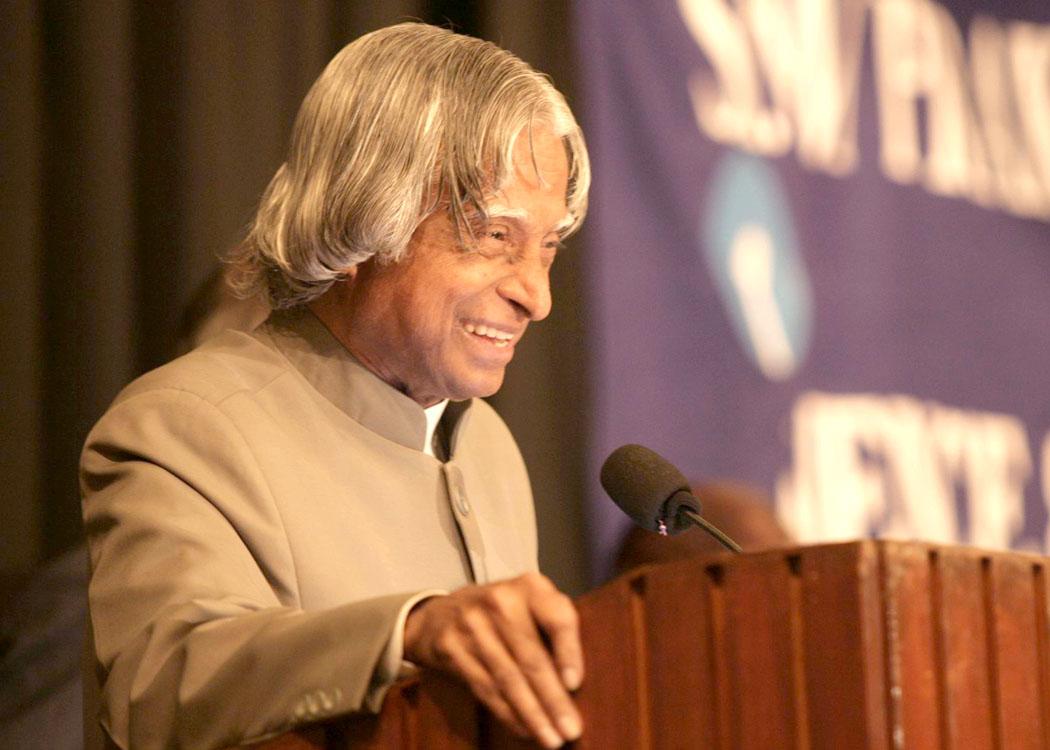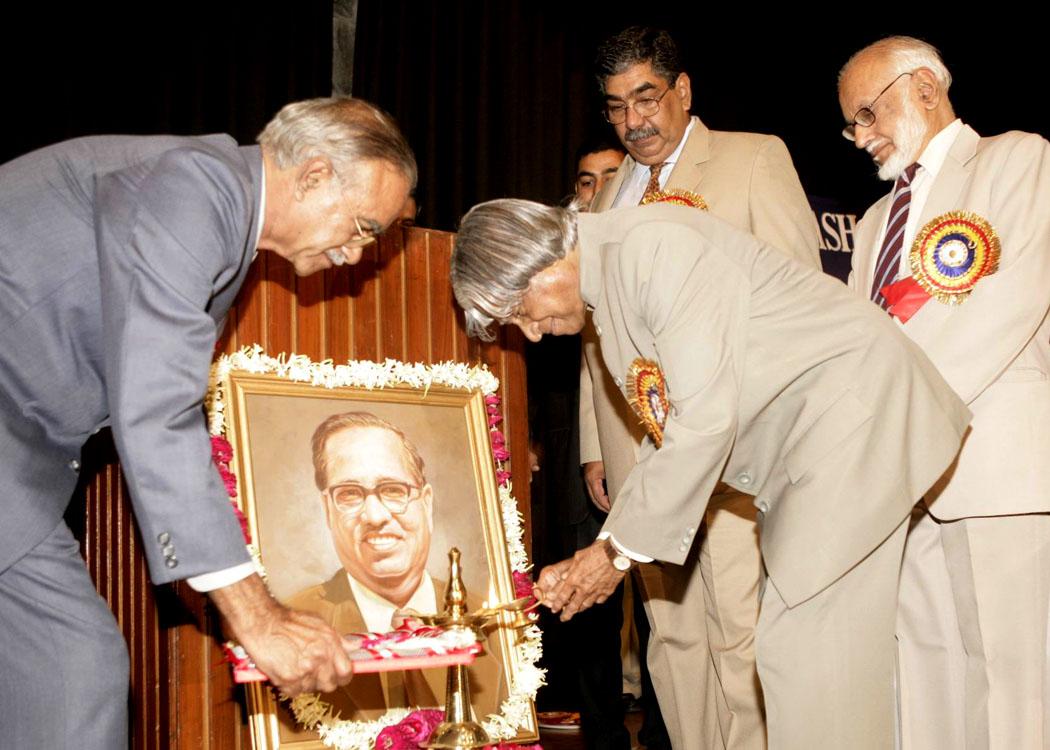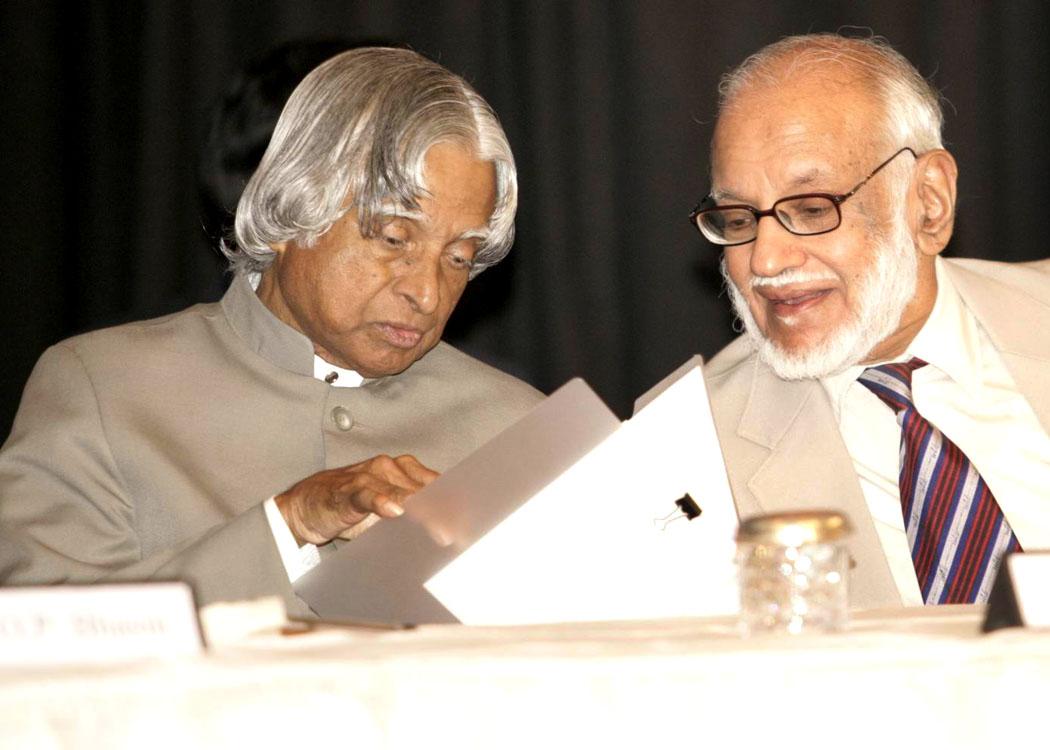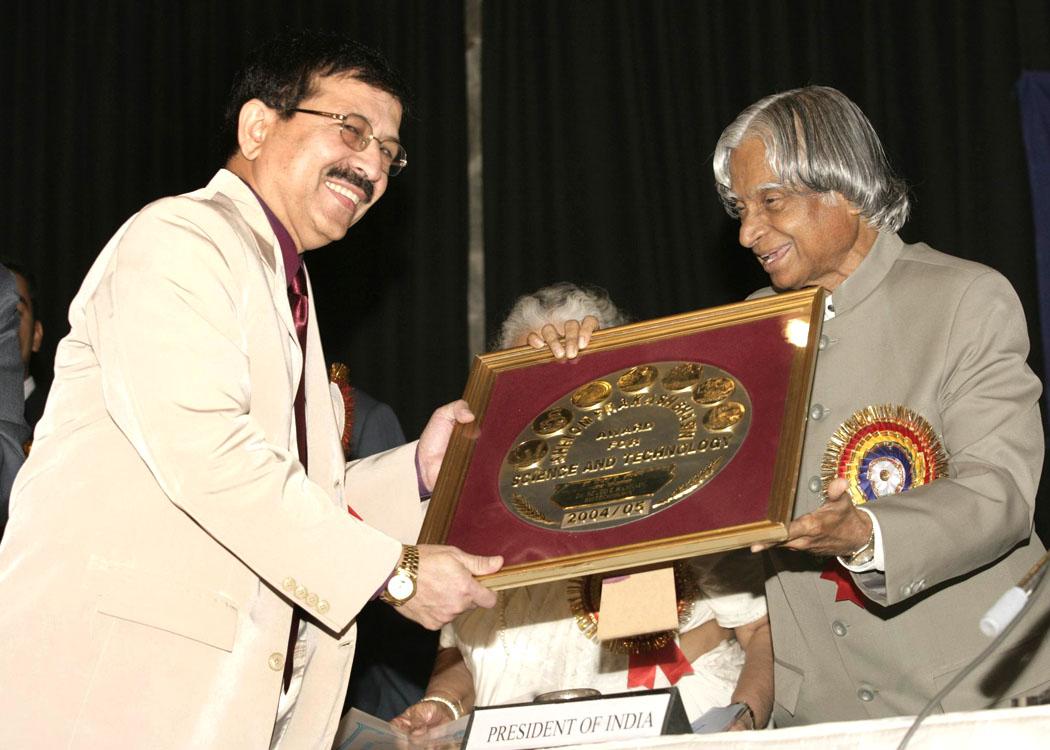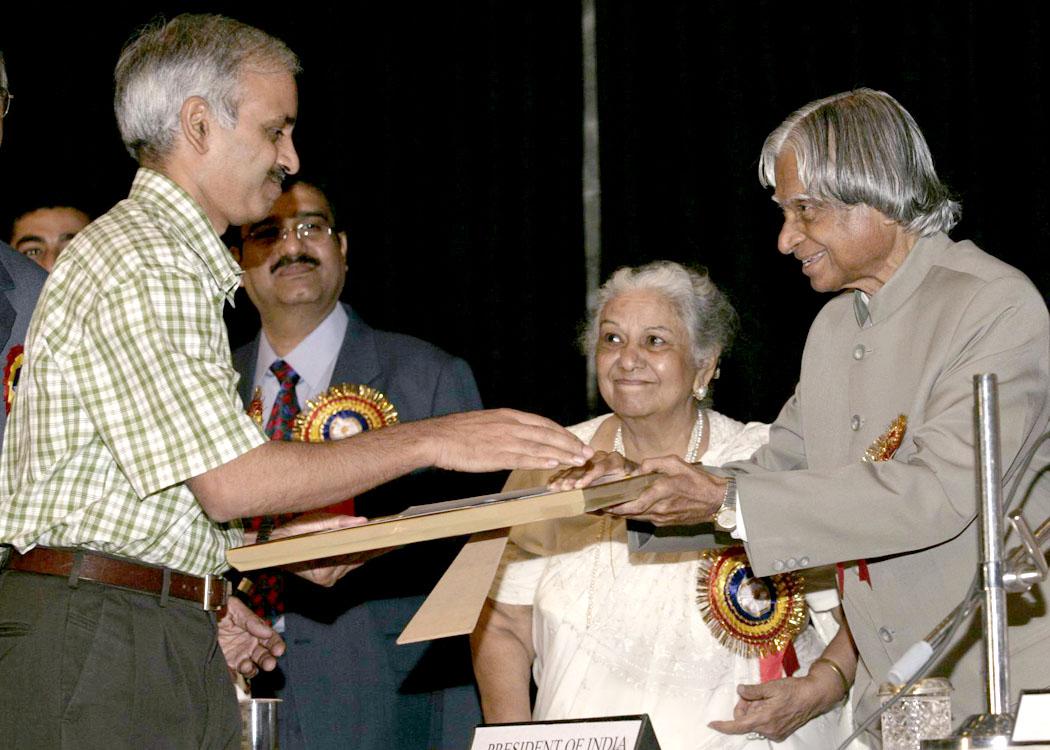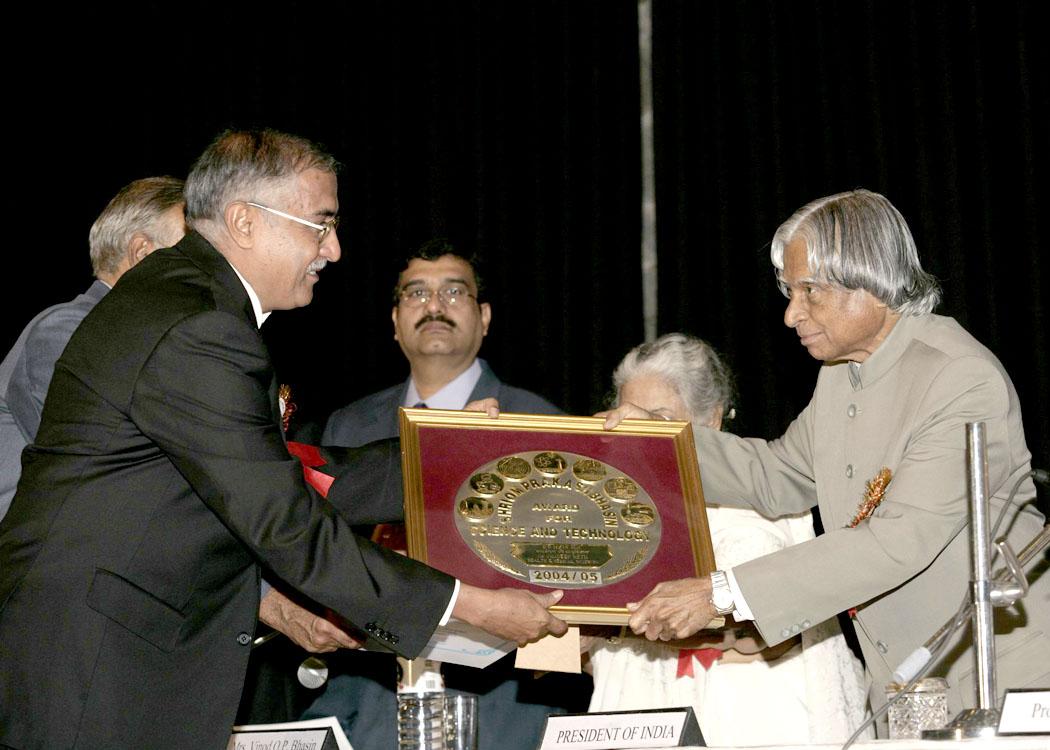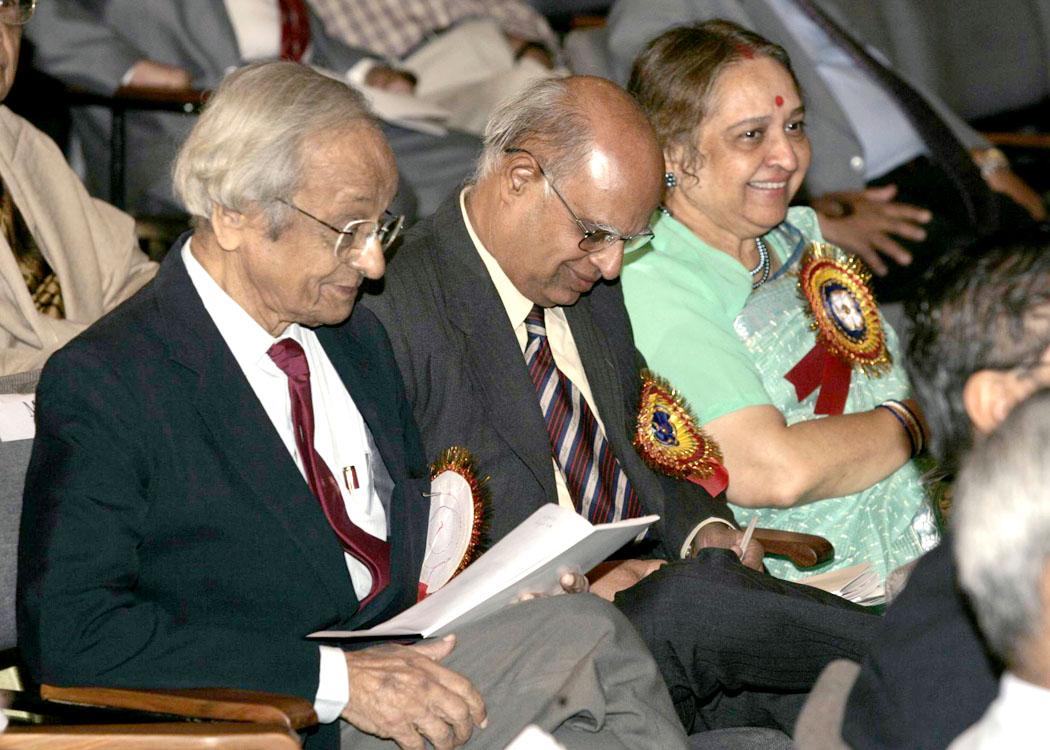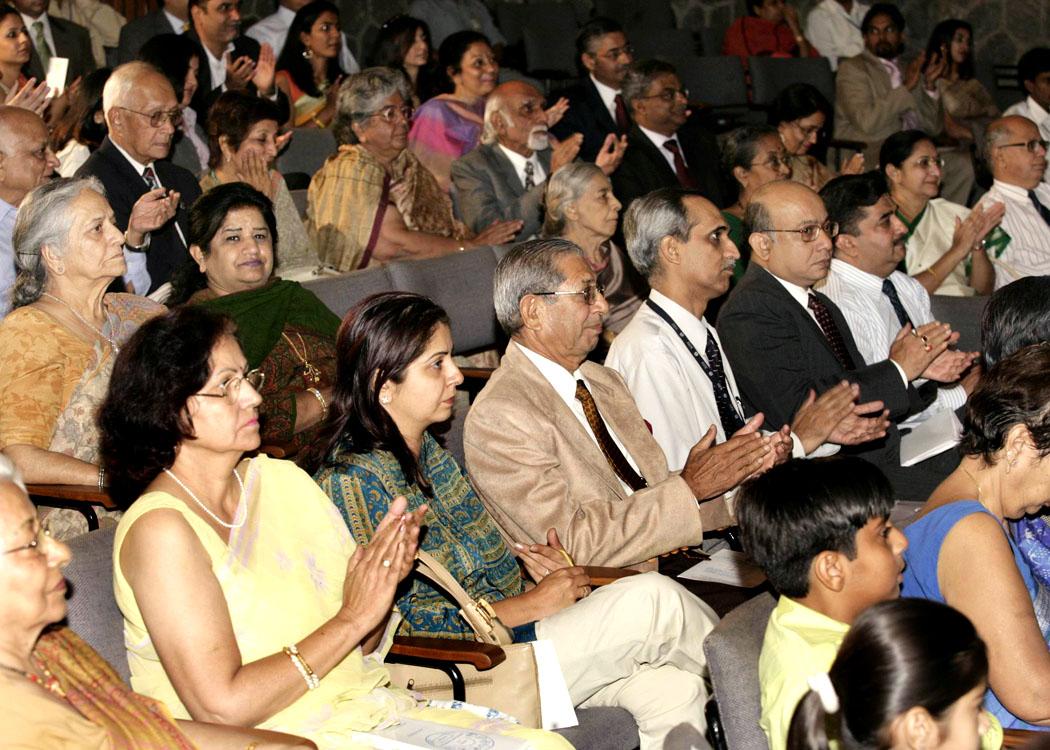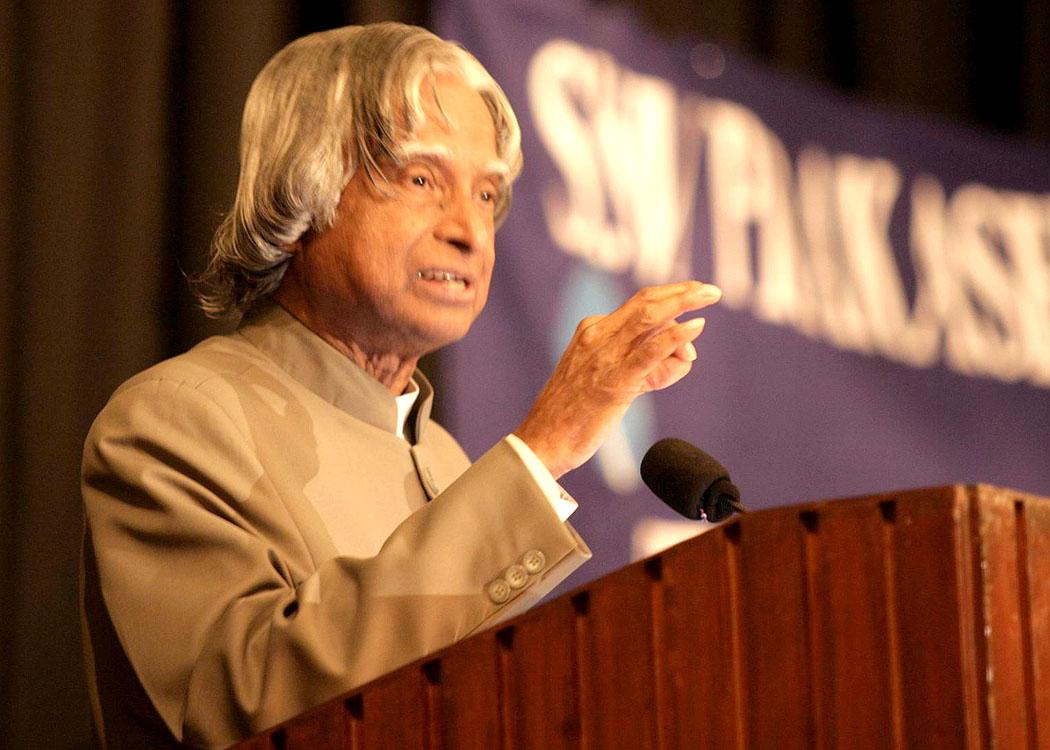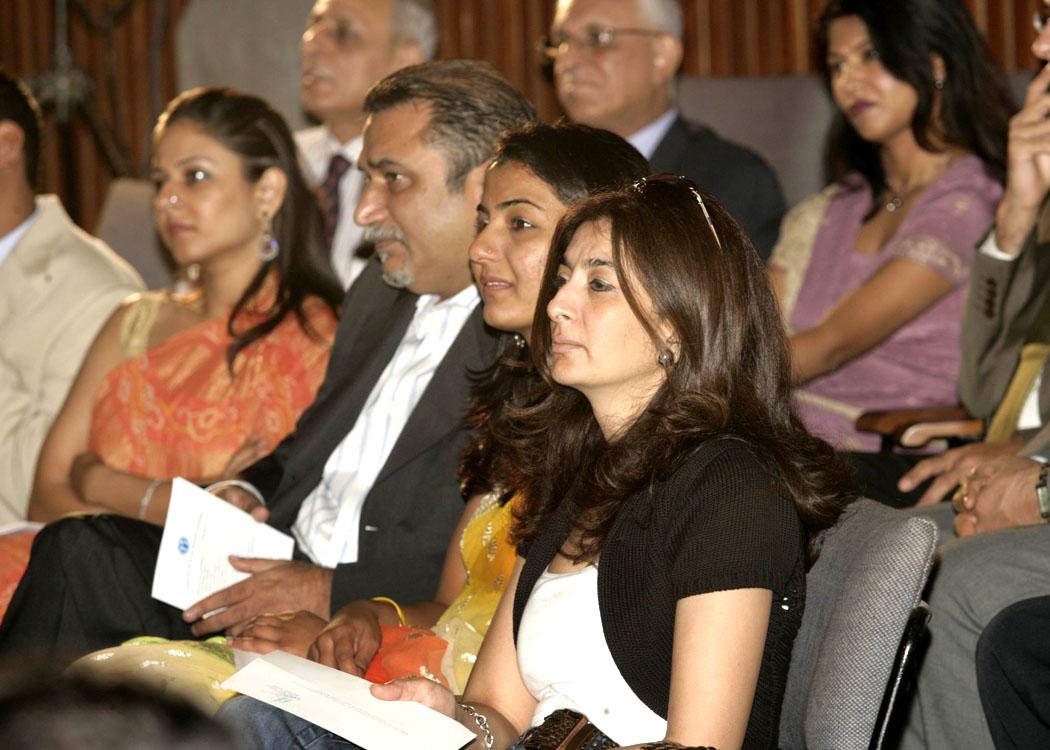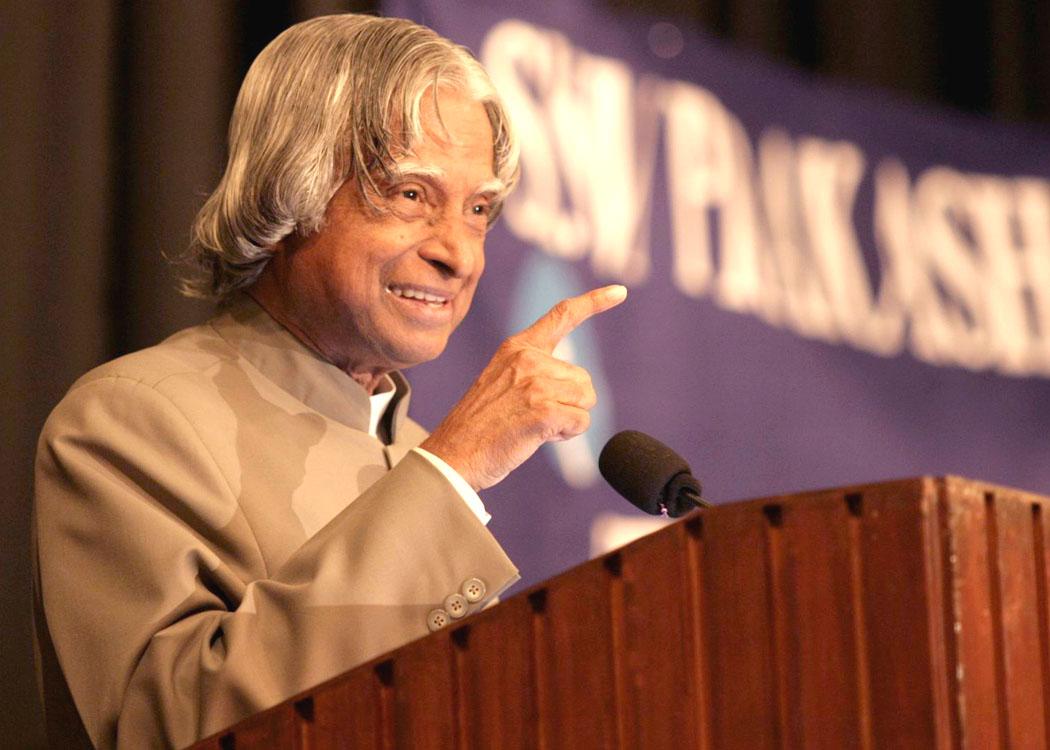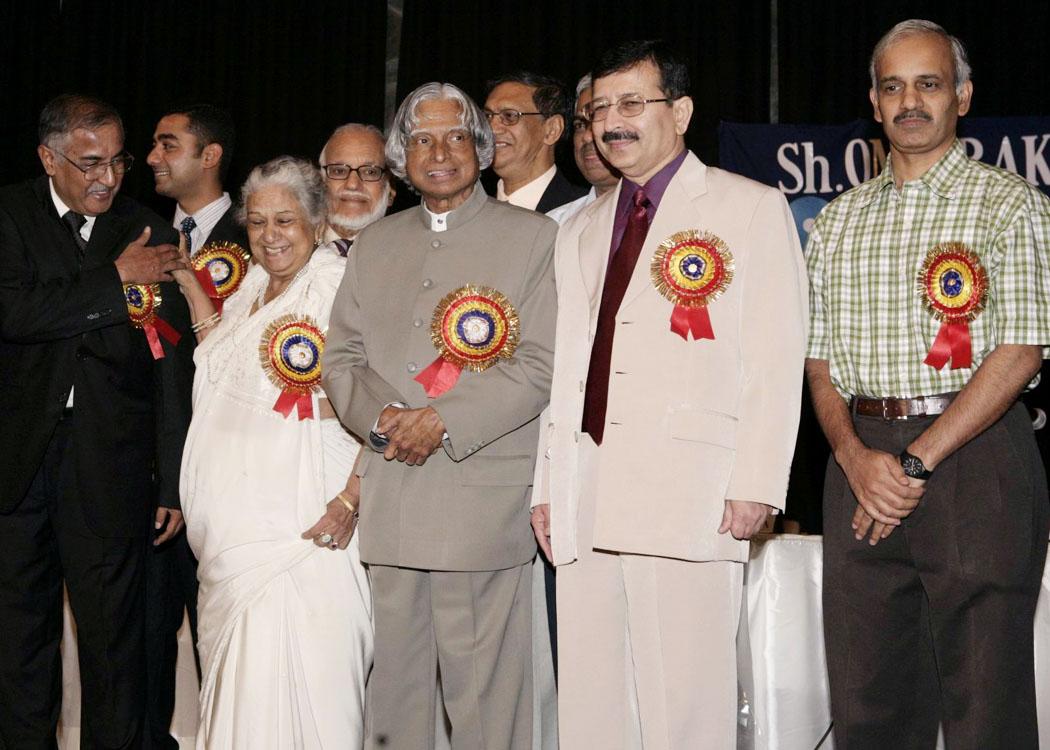Address at the Presentation of Shri Om Prakash Bhasin Awards for Science and Technology for the Year 2004,2005, New Delhi
New Delhi : 26-10-2006
Attracting Youth for Science
"Creativity leads to thinking,
Thinking provides knowledge,
Knowledge makes you great."
I am indeed delighted to participate in the presentation of Shri Om Prakash Bhasin Awards for Science and Technology for the years 2004 and 2005 organized by Shri Om Prakash Bhasin Foundation for Science and Technology. I congratulate the award winners Dr. Seyed E. Hasnain, Dr. J. Gowrishankar, Dr. Prem Chand Pandey, Dr. Ashok Jhunjhunwala and Dr. Pradeep Seth and greet the scientists, technologists and the distinguished guests. I would like to give a suggestion to Shri Om Prakash Bhasin foundation to consolidate the rich experiences of 147 awardees and bring out in the form of a book which will become a great source of inspiration for scientists particularly the young researchers. I am happy to note that this award scheme has been instituted by the Shri Om Prakash Bhasin Foundation for recognizing the significant contribution of pure or applied nature or outstanding scientific leadership in the areas of Agriculture and Allied Sciences, Bio-technology, Electronics and Information Technology, Engineering including Energy and Aerospace and Health and Medical Sciences. Apart from this, the Foundation is participating in the promotion of economic, technological and cultural development of the country, specially rural development, welfare and upliftment of the weaker section of the society. My greetings to the Sri Om Prakash Bhasin Foundation. I would like to talk on the topic ?Attracting youth for Science?. While discussing on this subject, I would like to present few thoughts on scientific magnanimity, value of science, Research areas of the future creating a national Science Cadre and imparting the indomitable spirit.
Scientific Magnanimity
I would like to narrate an incident which took place during a function conferring Nobel Laureate Prof. Norman E Borlaug, a well known agricultural scientist and a partner in India?s first Green revolution, with Dr. M S Swaminathan Award, at Vigyan Bhavan, New Delhi on the 15th of March 2005. Prof. Borlaug, at the age of 91, was in the midst of all the praise showered on him from everybody gathered there. When his turn came, he got up and highlighted India?s advancement in the agricultural science and production and said that the political visionary Shri C. Subramaniam and Dr. M S Swaminathan, pioneer in agricultural science were the prime architects of First Green Revolution in India. Even though Prof Norman Borlaug was himself a partner in the first green revolution, he did not make a point on this. He recalled with pride, Dr. Verghese Kurien who ushered White Revolution in India. Then the surprise came. He turned to scientists sitting in the third row, fifth row and eighth row of the audience. He identified Dr. Raja Ram, a wheat specialist, Dr S K Vasal, a maize specialist, Dr. B. R. Barwale, a seed specialist. He said, all these scientists had contributed for India?s and Asia?s agricultural science. Dr. Borlaug introduced them to the audience by asking them to stand and ensured that the audience cheered and greeted the scientists with great enthusiasm. This scene I have not witnessed in our country before. This action of Dr. Norman Borlaug, I call it as ?Scientific Magnanimity?. Friends, if we aspire to achieve great things in life, we need Scientific Magnanimity to focus the young achievers. It is my experience that great mind and great heart go together. This Scientific Magnanimity will motivate the scientific community and nurture team spirit.
Value of Science
Recently I was reading the two volumes of the book titled ?The Big and the Small? from the Microcosm to the Macrocosm written by Dr. G. Venkataraman. In this latest book, author establishes fascinating link between particle physics and cosmology in two volumes. Since I am in the midst of Scientists and Technologists, I thought of sharing with you an incident narrated in the book about Sir CV Raman. Raman was in the first batch of Bharat Ratna Award winners. The award ceremony was to take place in the last week of January, soon after the Republic Day celebrations of 1954. The then President Dr. Rajendra Prasad wrote to Raman inviting him to be the personal guest in the Rashtrapati Bhavan, when Raman came to Delhi for the award ceremony. He wrote a polite letter, regretting his inability to go. Raman had a noble reason for his inability to attend the investiture ceremony. He explained to the President that he was guiding a Ph.D. student and that thesis was positively due by the last day of January. The student was valiantly trying to wrap it all up and Raman felt, he had to be by the side of the research student, see that the thesis was finished, sign the thesis as the guide and then have it submitted. Here was a scientist who gave up the pomp of a glittering ceremony associated with the highest honour, because he felt that his duty required him to be by the side of the student. It is this character that truly builds science. While we are discussing the need for scientific Magnanimity, Sir C.V.Raman?s great attitude towards his research student thesis and also a third element, the type of scientific challenge which will attract the youth towards science as a carrier. All the three elements have to be looked at together. Let us discuss what are the scientific challenges for the coming decade?
Research Challenges
Let me share with you certain scientific challenges that need integrated solution to enrich the life of the people of our planet particularly our nation.
1. In the energy sector, increasing the solar photovoltaic cell efficiency from the existing 15% to 45% using silicon as a base with Carbon Nano Tube is an important research challenge. Scientists in reputed laboratory in the world have established the fact that the alignment of the CNT with the polymer composites substrate is the key issue and this aligned CNT based PV cells would give very high efficiency in photovoltaic conversion. The polymer composites increase contact area for better charge transfer and energy conversion. In this process, the researchers could achieve the efficiency of about 50% at the laboratory scale. The intensity of research in Indian research institutions have to be enhanced to realize commercial production of CNT based Photovoltaic cells.
2. India has to go for nuclear power generation in big way using thorium based reactor. Thorium, a non fissile material, is available in abundant in our country. Intensive research is essential for converting thorium for maximizing its utilization and generating electric power through thorium based reactors.
3. Proteomics is the study of all the proteins expressed by the genome of a cell. It is the logical extension of genomics. Proteomics helps to understand the basic biological processes critical to normal cellular functions as well as the development of diseases. It identifies the essential components of these processes and exploits these components as targets in the development of new methods to prevent or treat diseases. The proteomics programme is done nationally. The type of work involved is huge and challenging, and much bigger than the Human genome programme. There is national programme in proteomics. This has to be given thrust with cooperation of International Scientific community.
4. There are many research and development and testing of vaccine are progressing in the country for prevention of HIV/AIDS disease. It is indeed a big challenge for life science scientists to have an integrated vaccine development leading to production in three years time.
5. Stem cell research through three areas such as Adult stem cells, umbilical cord stem cells, and embryonic stem cells has to be pursued on a mission mode for finding cure for many diseases.
6. In many places in our planet, we experience severe earthquakes resulting in loss of life, loss of wealth and in some cases it destroys the decades of progress made by the country and its valuable civilizational heritage. India has earthquake problems periodically in certain regions. During my recent visit abroad, I found serious research in Iceland, Ukraine and Russia by young scientists. It is essential India has to work on mission mode research for forecast the earthquake using multiple parameters using precursors such as pre-shock conditions, electromagnetic phenomena prior to final rupture and atmospheric and ionos
7. The quantum of rainfall in a particular area for a particular cloud condition within a specified duration is not being determined by the present monsoon prediction system. Recent heavy rains in Mumbai, Chennai, Hyderabad in our nation and Katrina hurricane in US has created enormous loss of life and property. This brings out the necessity for global monsoon research for determining intensity and quantum of rain in a particular cloud condition through a validated prediction system with detailed research. With this system scientists should be able to provide the information for the particular cloud condition, how much rain will come in what period through the use of Polorimetric radar.
Solutions to these seven problems: first two relating to solar power and nuclear power area, third relating to healthcare, fourth relating to HIV/AIDS, fifth relating to stem cell research,Sixth relating to forecasting of earthquake and Seventh relating precision forecasting of rain content for particular cloud condition are challenging areas for the young researchers.
So far, I was discussing four types of actions needed to attract the young to take up science as a carrier. There is another important aspect, which we have to consider. After 10+2 study, children normally decide with parental pressure to choose from technology driven or science driven areas for their further studies. Here I would suggest the necessity of a national science cadre to attract the best minds for taking up science as their life time mission.
Science Cadre
During my interaction with the students, Ms. Arunava Roy, of 1st Year ? Biotechnology from the University of Calcutta asked me the following question:
"A majority of the bright students at the high school level aspire to become a doctor or an engineer. How can these rich minds be motivated towards taking up research as a first grade career option?"
This question is indeed is the reflection of the feelings of most of the students who are in the 10+2 stage. We have to find the right answer. I have had many discussions with parents also. The parents spend almost all their earnings in order to educate their children, since they see the education as the best way of promising an assured career. They even go to the extent of sacrificing their personal luxuries and get loans to educate the children. The only vision they have in their eyes is to see well settled sons and daughters with guaranteed profession. They see this happen if their children pursue a degree in Engineering, Management, Medicine or administrative services. They do not see the pursuit of pure sciences and research guaranteeing this.
This, I consider as an important area of concern of the nation and it needs the attention of the scientific community as a whole. In my view, it is essential for the nation to assure a career for those who wish to pursue science as a mission. This will attract many students with the full support of the parents. We should work for the creation of a science cadre, with clear mission goals, well defined growth path and attractive salaries. There should be a minimum annual intake of about 400 M.Sc and 200 Ph.Ds with assured career growth in the organisations such as CSIR, DST, Department of Earth Sciences, Department of Bio Technology, Department of Agriculture, ISRO, DRDO, Atomic Energy, and the Universities. This could be discussed by the academies of sciences and scientific advisory committee to the cabinet for making recommendation to the cabinet. Starting a number of Indian Institutes of Science Education and Research is definitely a good effort towards attracting youth towards science as a career.
Conclusion: Indomitable spirit
Now I would like to recall a great clarion call of indomitable spirit, which was given by Sir CV Raman, at the age of 82. The message is still reverberating in my mind: ?I would like to tell the young men and women before me not to lose hope and courage. Success can only come to you by courageous devotion to the task lying in front of you. I can assert without fear of contradiction that the quality of the Indian mind is equal to the quality of any Teutonic, Nordic or Anglo-Saxon mind. What we lack is perhaps courage, what we lack is perhaps driving force, which takes one anywhere. We have, I think, developed an inferiority complex. I think what is needed in India today is the destruction of that defeatist spirit. We need a spirit of victory, a spirit that will carry us to our rightful place under the sun, a spirit, which will recognize that we, as inheritors of a proud civilization, are entitled to a rightful place on this planet. If that indomitable spirit were to arise, nothing can hold us from achieving our rightful destiny.?
It is indeed a great message from physics Nobel laureate of our country to the members assembled here on this important occasion. Once again let me congratulate all the award winners and my best wishes to all the participants in their mission of promoting excellence in Science and Technology needed for transforming India into a developed nation before 2020.
May God bless you.

